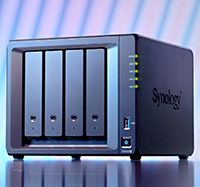Video: A bulletproof photo backup workflow
posted Thursday, December 15, 2022 at 11:00 AM EST

Losing your photos is every photographer's nightmare. A failed memory card is bad enough, but what if your hard drive fails and you don't have a backup? You lose everything. Unfortunately, for unprepared photographers, this horrible event can occur. The good news is that you can dramatically reduce, if not eliminate, any practical risk of losing your precious photos with a good backup strategy and workflow.
Photographer Nigel Danson released a new video in his ongoing "The Photographer's Toolkit" video series. The series focuses on different accessories, gear, and strategies aimed at helping photographers with everything aside from taking photos. Danson has videos about affordable accessories, useful smartphone apps, how to handhold long lenses, and much more. The new "backup strategy" video below outlines Danson's gear and setup to store, backup, and generally protect his precious data.
Danson uses a Synology NAS drive. While you don't need to purchase the same drive, it's important to understand what "NAS" means. NAS stands for network-attached storage. It's a data storage device you can connect and access through a network, rather than needing to use it directly alongside your computer. It's even possible to remotely access your NAS drive outside your local network. Danson's Synology data storage drive includes multiple hard drives inside a large enclosure, which creates redundancy. If one of the hard drives fails, that's okay, as the same data is stored across multiple drives. While this setup, often referred to as RAID (redundant array of independent disks) reduces the "available" capacity of your hard drives, it protects you against a failed drive. The odds of every drive failing at once is astronomically low, but of course, even that minute risk can be mitigated with an off-site backup (more on that in a bit).
Before tackling online backup and how to handle the situation when you've run out of storage space, let's talk about how Danson handles data in the field. Many cameras include dual memory card slots, which can be used for overflow, separating still photos and video clips, and creating instant backups in the camera. In about 15 years of shooting, I've had one memory card fail, and even that single failure feels like bad luck based on my discussions with other photographers over the years. Unfortunately, I didn't have the camera setup for duplicating my images to the second card slot – lesson learned. As shown in the video above, Danson has also learned the painful lesson.
Danson also travels with his computer and an external drive, so that he can backup his images not only to the second card slot, but also a hard drive. Even if, somehow, both cards failed or were damaged, he'd still have his files on a separate drive. He also keeps his backups in a different place. Someone could steal your camera bag, so it's a bad idea to keep your memory cards and hard drive in the same case. I also don't format any memory card until I've downloaded the images to my computer and backed them up on an external drive. While you can sometimes recover deleted or lost images from a formatted memory card, it's not a foolproof strategy.
As soon as he has a network connection, which sometimes occurs in the field, Danson also backs his files up to the cloud using a Synology C2 Cloud backup account. Many excellent cloud backup solutions are available, and they are well worth the investment. Having offsite storage is important, at least for your most precious image files. Nobody wants to think about losing their possessions in a fire or flood, but it can happen to anyone. And if it does, you want your digital possessions to be safe. Your photos are precious and deserve protection.
To summarize, you ideally backup your images to a second memory card and an external hard drive when in the field. When home, having your images stored across multiple drives, or at least a RAID array, plus the cloud, offer you excellent protection against drive failures and disaster. Readers, what's your backup strategy? Do you have any favorite storage solutions? Let us know in the comments.
(Via Nigel Danson)